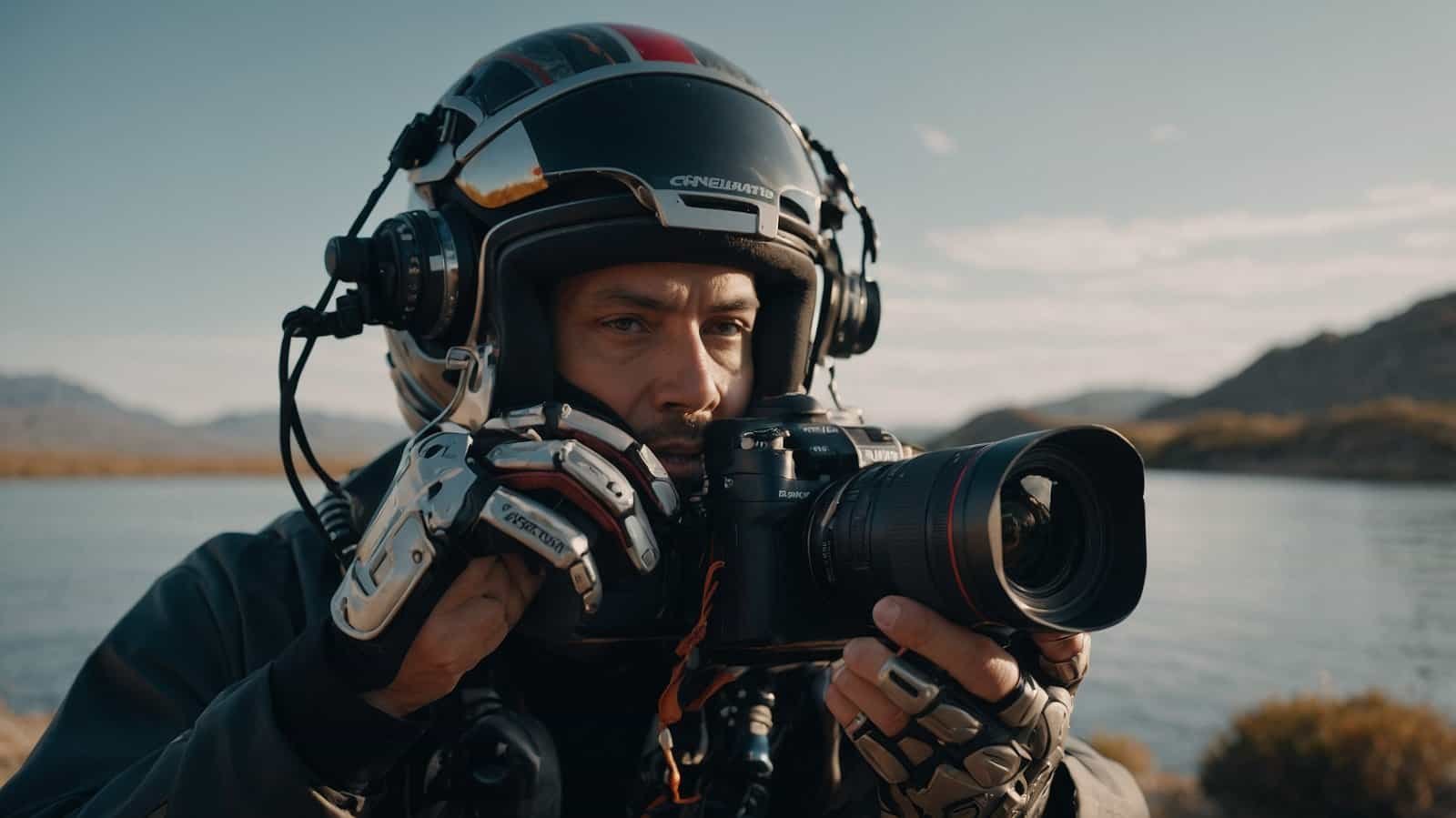The spectre of AI is haunting content creation. As an amplifier of content creation, it holds unprecedented capabilities for efficiency, scale, and creativity. It brings new opportunities for professionals in journalism, music, software, and other creative professions at a time when those industries are undergoing structural changes.
Content creators everywhere face a daunting challenge: capturing and monetising society’s need to express itself creatively. But as alluring as the benefits of AI may be, so too are its pitfalls: not only the obstacles of retaining quality, originality, ethics, and technical values, but also the risks of compromising currently lucrative content creation industries. Content creators face these challenges as they bring AI technologies into their workflows. In this post, we’ll examine those challenges in greater detail and explore steps to address them so that AI creation is not a disruption.
The Quality Conundrum: Ensuring High Standards in AI-Generated Content
Perhaps the most pressing challenge of AI-generated content creation is by far the quality issue, simply: if it’s written by a machine brand, it will not be capable of generating relatively error-free text; we still need to question theence, richness, or relevance; but also, more importantly, if the content produced by these automated techniques needs to adhere to accuracy or’readability’ standards.
AI is the remedy here. Carrying out rigorous quality assurance processes is essential—manual inspections of the content, along with automated validation techniques such as Grammarly, Copyscape, etc.—combined with human-initiated reviews with a human editor refining AI-created content to match the necessary standard and fit the target audience. Firstly, manual pre-publishing inspections are needed to find the issues and use A/B testing (which compares two variants of a webpage to see which performs better) or readability tests. It helps to find the problems before the publishing process. And yet, keeping content excellent for an audience is also an essential matter, which would help AI copywriting be optimised to perform well in search engines like Google.

Originality and Plagiarism: Navigating the Ethical Minefield
If AI can produce something that sounds plausibly like an original-sounding piece of work yet was written entirely from vast databases, how are people to tell the difference? This would raise concerns about both plagiarism and originality. By giving robots a real possibility that worthwhile content would be countermanded as plagiarised rubbish or, even worse, as completely original rubbish. Beyond the legal liability of passing something off as your own, there is the issue of distrust in your content.
Risks can be reduced by using more sophisticated plagiarism checking tools that can detect problems before content is published, by training AI models on ethically sourced, licensed content, and by adhering strictly to guidelines for checking copy for citations or quotes derived from other written materials. Spreadbot.
The Bias Dilemma: Striving for Fairness and Inclusivity
To paraphrase the song, ‘AIs are biased as we train them. They inherit prejudices that have been carefully engrained in MP3s.’ In the context of generating content, overt bias has the potential to alienate content consumers and bring discredit on the brand. However, the implications of failing to detect bias and correct it go beyond that.
Ensuring a bias-detection step in the process is crucial. Tools that analyse the bias in AI models and check that content is fair and equitable are needed as part of the content creation workflow. In addition to fostering an inclusive work culture within the content creation team, this can help keep the outputs of AI checks routine.

Technical Hurdles: Scalability, Consistency, and Resource Management
However, challenges to producing AI-authored content at scale are often technical: achieving high-quality and large-scale generative AI requires considerable computational resources—a major barrier for smaller organizations—and keeping the content uniform throughout a large project can be challenging because AI models produce different results based on minor changes in the input data.
One way to address these problems is by harnessing cloud-based AI services, such as Amazon Web Services and Google Cloud platforms, that offer computational power at scale without requiring organisations to make large-scale infrastructure investments. This way, smaller organisations can make use of more extensive AI toolsets that are otherwise inaccessible to them. The overarching narrative should feel consistent from one block of text to the next and make sense when taking an individual piece in isolation. Building attention and memory mechanisms into AI models also helps to maintain a coherent, sequential experience for the reader.
The Human Touch: Blending AI Efficiency with Human Creativity
However, just as AI might not be able to replace intimacy, it cannot fully automate or speed up content generation. Indeed, an optimal content solution should strike a balance between the efficiency of AI and the creativity, emotion, and intimacy of humans.
One solution is to use AI as a tool for production, such as a writing-technology co-creator for producing first drafts, researching for a wider audience, or optimising for SEO to serve human content makers to create the next level of creativity and innovation. AI can support the ‘heavy lifting’ of work, allowing human machines to focus on the ‘humanising value chain’ of content creation. I believe synergy between AI technologies and human insights will enable content makers to generate next-level creativity and innovation.
Ethical and Legal Considerations: Safeguarding Integrity and Compliance
As AI technology gains popularity in content creation and automation, rising levels of copyright infringement, data privacy concerns, and misinformation can be anticipated. These complex issues necessitate a combination of learning the existing applicable laws and placing ethical practices within content creation on track.
For creators, it will be a lifelong course of continuing education, starting with learning about AI when it comes to content production, the best practices for copyright (particularly the question of who owns the works produced by AI), and the maintenance of data in the age of GDPR to ensure it’s handled privately and ethically. Second, having red-line rules in place around ethics will be key. How can we, as consumers, combat issues such as the peddling of fake news by AI tools that only want to turn a profit? Who is ultimately responsible here? Third, and most importantly, we need to be open about who created our content—something that should apply not just to AI but across all content creation. It is never okay to pull the wool over anyone’s eyes.

The Future of AI in Content Creation
The world of AI is evolving at breakneck speed, with innovative advancements and tools popping up by the minute. Anyone looking to remain best-in-class must continue to stay one step ahead and evolve their approach and skillset.
It’s important for practitioners to keep their fingers on the pulse since AI tools and trends are constantly evolving. They can attend industry conferences, undertake online courses, or enlist the advice of AI experts. They should also, crucially, stay agile and be prepared to experiment with and work on new AI applications to develop novel forms of content creation.
Conclusion
AI is a great tool and, if used responsibly, will make content production much better. Of course, challenges are involved, whether in matters of quality control, originality, bias, technical limitations, or ethics. Content producers who recognise these challenges and address them can make effective use of AI without undermining the quality and impact of their content.
The same principle will apply as AI improves, making the most successful content creators those who have a light touch, know when to get the computer to do the hard work, and think most creatively about how to marry the best of their human essence with the best of what AI offers.

